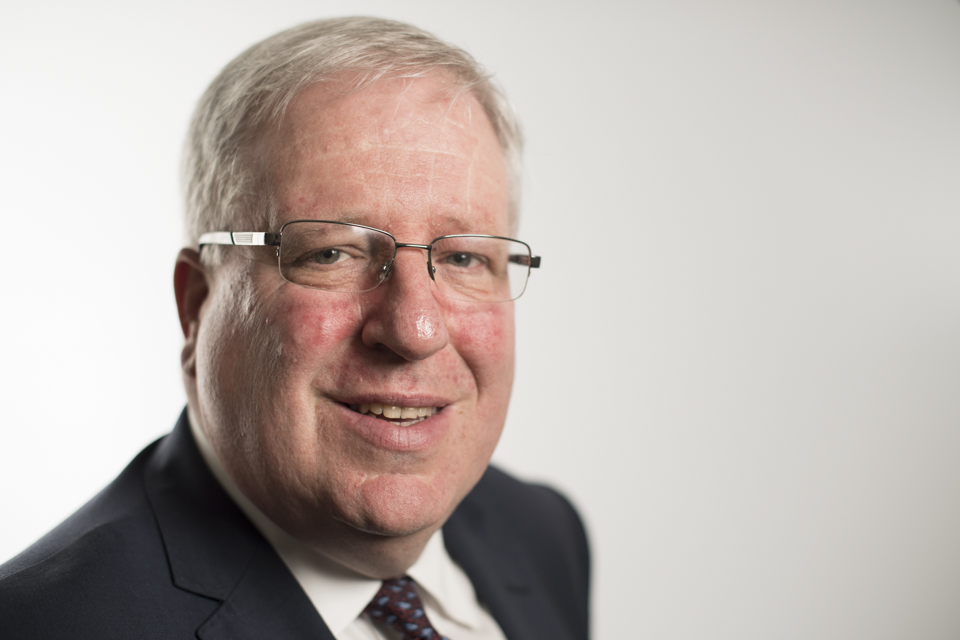Transforming transport connectivity in the north
The Secretary of State for Transport, Patrick McLoughlin discusses transforming transport connectivity in the north.

Sir David Higgins, the Chairman of HS2 Ltd, has today presented the government with his recommendations on how to transform transport connectivity in the north. His report, Rebalancing Britain, has confirmed the government’s strategy of developing HS2 is the right one.
In particular, Sir David confirms that the strategic goal of the Y network to link Birmingham to Manchester and Leeds by high speed rail is right and should be delivered as quickly as possible. He makes recommendations for some small modifications.
In addition the report says that a new east to west high speed link could halve journey times between Manchester and Leeds, transforming the economic geography of the country.
In response, the Prime Minister and the Chancellor have today given the green light to develop proposals for HS3; a high speed rail link designed to bring together the north’s great cities thereby cutting journey times, boosting businesses and creating more jobs and security for hardworking people.
The government also welcomes the report’s recommendation that cooperation on transport issues should be formalised in the north. We will create a new body called Transport for the North (TfN), made up of the main northern city regions. This body will work together with other authorities and stakeholders and allow the north to speak with one voice on the big decisions, to benefit the region as a whole.
I would like to invite these cities to come together and work with the government on the options for HS3, alongside a wider transport strategy for the north. I intend that this government led strategy will be developed with input from Network Rail, the Highways Agency as well as TfN, and will stretch from Liverpool to Sheffield, Hull and Newcastle.
I also welcome Sir David’s recommendations on the modifications to the Y route, and will commission HS2 Ltd to do more work on the route and stations for Phase Two.
This includes further work on Leeds Station, South Yorkshire and East Midlands’ hubs, the approach to Manchester, the Golborne link, the link to the East Coast Mainline and proposals for a hub station at Crewe. We will also continue to look at options for benefitting those places not directly on the line of route.
On the western leg, the government’s consideration of the evidence so far indicates that routing the western leg via Crewe would be the right strategic option. That is still to be confirmed. But we will work on ways to accelerate delivery of the section to Crewe, pending a decision on the route in 2015.
In turn, I would ask HS2 Ltd to work with Stoke, Stafford and Macclesfield to enable direct high speed train services to serve those towns and cities via the Handsacre junction and classic network.
The report concludes that the route into Manchester should run via Manchester airport, with decisions on an airport station to be taken in due course.
It also says that further work is necessary on the Golborne link, both the route and the depot location. I will ask HS2 Ltd to continue work on this.
On the eastern leg, the location of the East Midlands hub needs to work for both Derby and Nottingham, and provide the best possible connectivity to the wider region. I am asking HS2 Ltd to continue work on this.
Sir David remains convinced on current evidence that Sheffield Meadowhall is the right location for the South Yorkshire hub. I am waiting for further evidence from Sheffield before a final decision on this.
The Leeds station site needs to work for both improved east-west connectivity and for HS2. I will request a full review of options for the station, in conjunction with Leeds City Council.
I will also ask HS2 Ltd to conduct a review into the cost, and the time it takes to build high speed rail lines, drawing on international experience, to find ways of bringing down the cost of Phase Two.
We will take decisions on how to take Phase Two forward in 2015.
We are making good progress on the Phase One hybrid Bill, and we expect to start construction in 2017. This will improve journey times not only to and from Birmingham, but to the north and Scotland.
The government’s vision is that our high speed rail network will provide the spine of our 21st century transport system. The network will bring closer together the key economic centres in England and Scotland. ‘Rebalancing Britain’ supports the delivery of our vision - working with interested organisations and planning the railway as effectively as possible.
Related document: Centre for Cities report on improving transport connections between major cities
On October 20 2014, Centre for Cities published the Fast track to growth report with support from DfT which looks at the changing role of transport in our major cities.